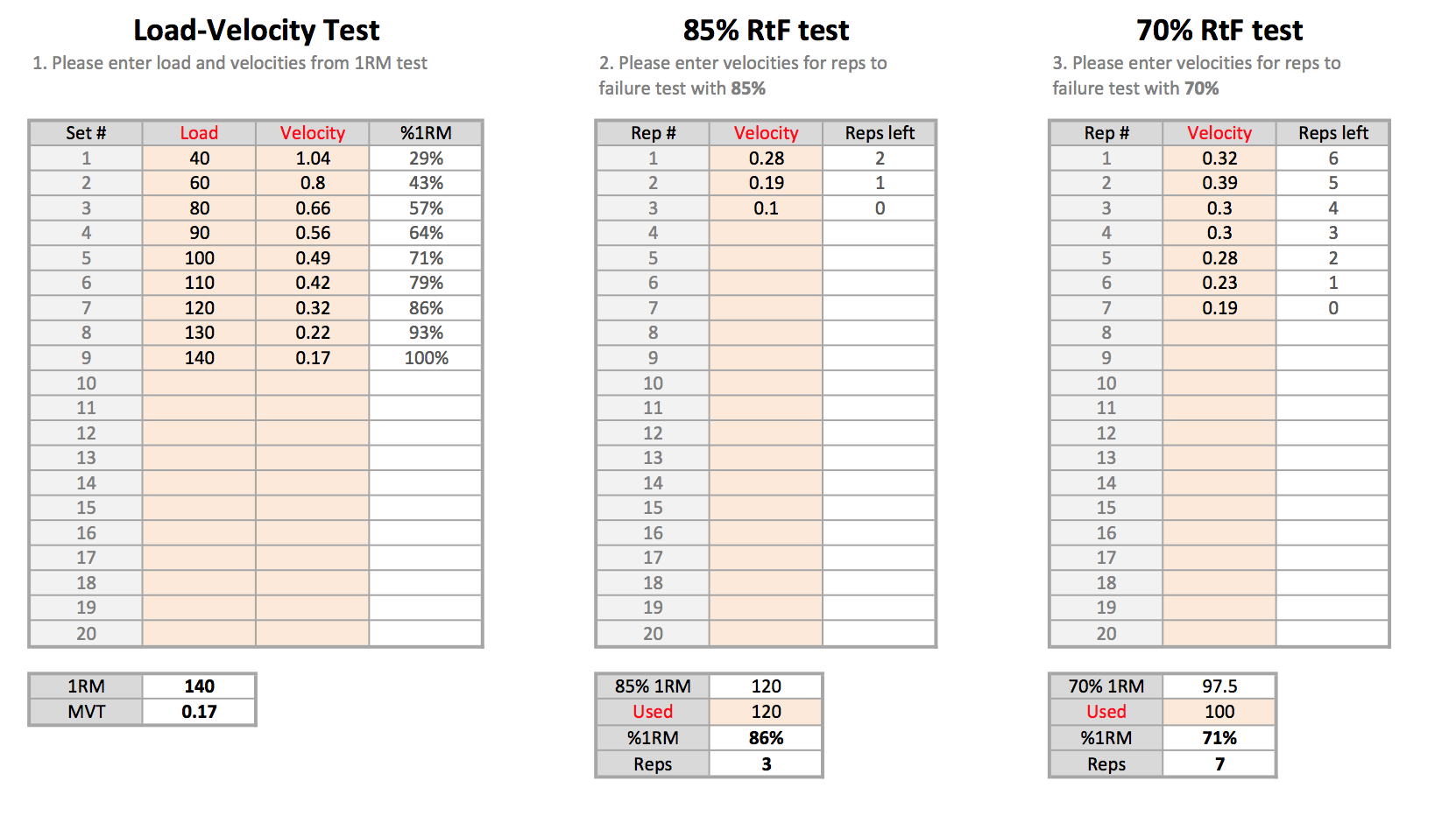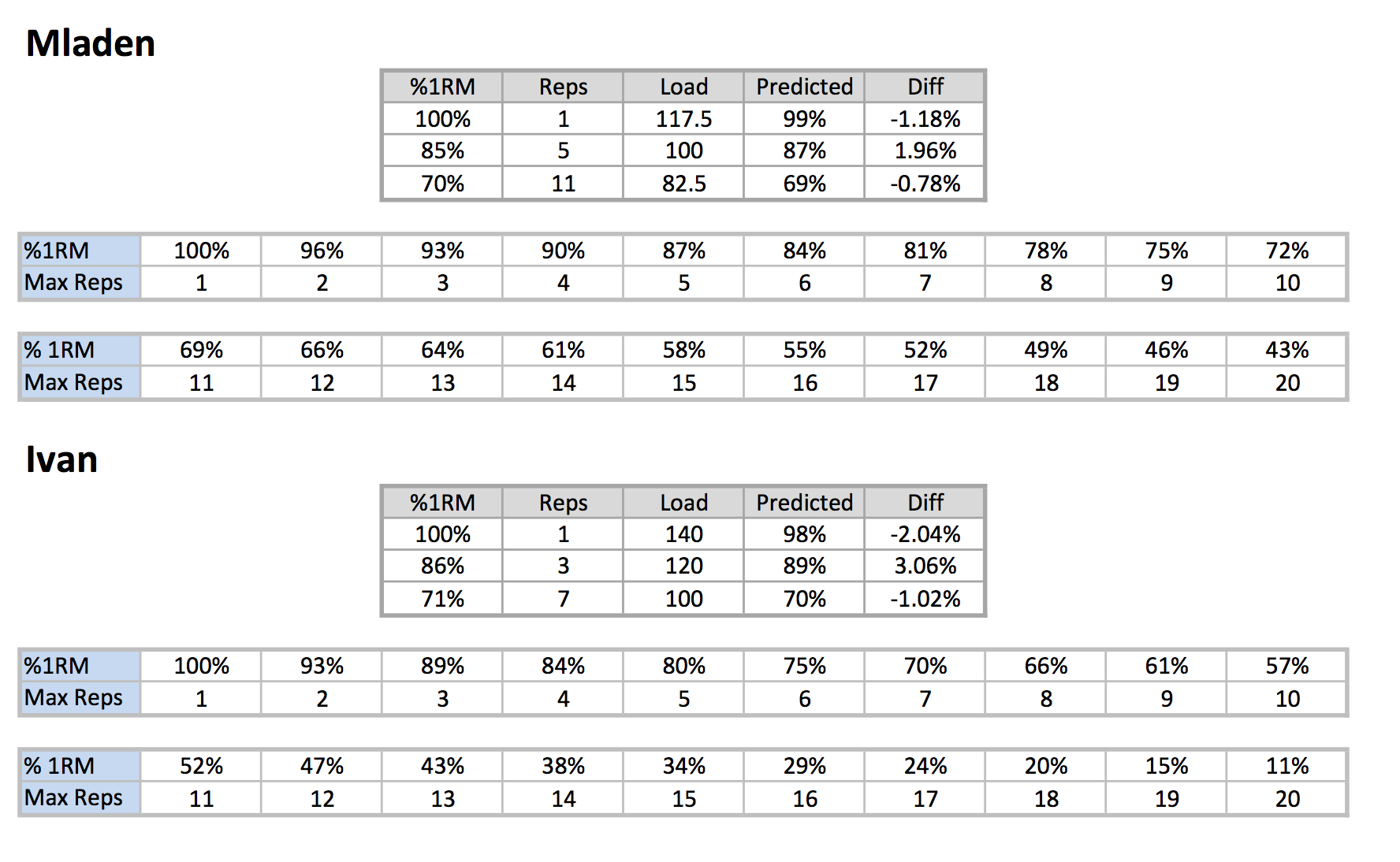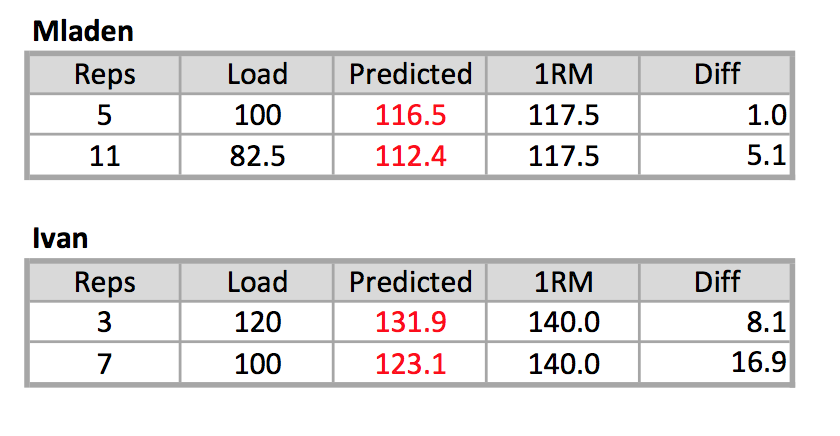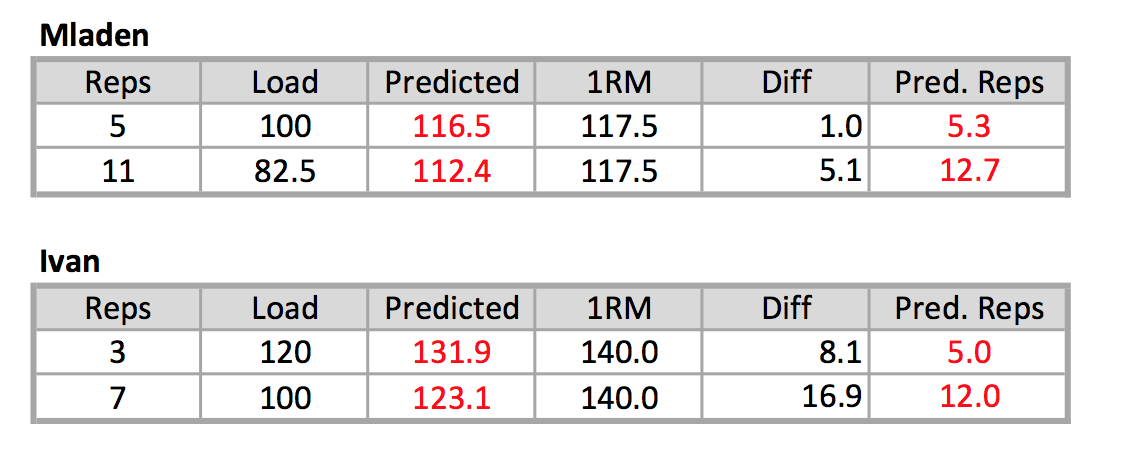How to Create Individualized Exercise Profile in Strength Training? Part 3: Rep-Max Profile
Previous parts:
How to create individualized exercise profile in strength training? Part 1: Testing
How to create individualized exercise profile in strength training? Part 2: Load/Velocity Profile
In the previous installment we dealt with analysis of progressive 1RM test, and we got Load/Velocity profile. One thing that is important from Load/Velocity profile, from velocity-based strength training standpoint is MVT, or minimal velocity threshold, which seems to be pretty similar between athletes and ‘within’ athlete (i.e. over time for a single athlete).
Knowing exercise/individual MVT (0.15m/s for bench press and 0.3m/s for squat in most of the cases) allows one to estimate daily 1RMs using warm-up sets and to plan/prescribe loads using velocity instead of percentages and reps. We will cover this way of doing things as well, but before that we need to understand rep-max profile.
I will report the data again, so you can refer to them as needed.

Mladen’s performance

Ivan’s performance
Why do we need RtF tests? For couple of reason. The most simple one is to create individualized rep-max table (good overview is done by Mike Tuchscherer HERE). Another reason is my need to test if there is a relationship I call Velocity/Exertion (that’s why we have measure velocities for every rep and done every rep with highest effort).
To create individualized rep-max table (and later Load/Exertion table) we can use approach that Mike Tuchscherer outlined, or we can use simple linear regression. Learning from an example with Anscombe’s Quartet, it is always important to graph your data.
Here is data for me and Ivan for 85% RtF and 70% RtF tests.

Mladen’s results for 85% and 70% RtF tests

Ivan’s results for 85% and 70% RtF tests
As can be seen from the graphs, variance explained is nearly perfect, which means that the simple linear model can explain relationship between 100%, 85% and 70% max number of reps.
What I did also was to compare estimated %1RMs at number of reps done and the real %1RM used (these are basically residuals) and the error is around 1-3%.
In Ivan’s case, he might have been a bit tired from couple of failed 1RM attempts before two RtF sets. Hence, next time we might listen to Mike Tucshcerer’s advice and do it with couple of days in between. I also think that Mike’s approach of populating the rep-max slots might work if the relationship is not-linear, or we can do regression for 100% to 85% and 85% to 70% and further down. But as you can see from the graphs, the relationship is linear (at least for the rep ranges we used, maybe the things start to get curved below 70%).
Using the regression from these three known parameters (1rep @100%, reps at 85% and reps at 70%) we can populate the rep max table. Here is it for me and Ivan.

Can this be done simpler? Probably – but it might/will affect the precision of the rep max table. One way to do it could be to perform only one RtF set, either with 85% or 70% (or in this case using something in between, like 77.5%)
One thing we can also inspect is can we predict 1RM from RtF tests. We can use Epley/Beachle formula (recently made famous by Jim Wandler and his 5/3/1).
1RM = (REPS x WEIGHT x 0.0333) + WEIGHT
For example, I did 11 reps with 82.5kg, so we get (11 x 82.5 x 0.0333) + 82.5, which equals 112.7kg. Let’s do it for other sets for me and Ivan.

It can be said that I did pretty good, while Ivan’s predicted 1RMs were off the chart. This is probably related to the fact that he was tired from couple of missed 1RM attempts beforehand. Or, as we know from the rule of thumb, that stronger athletes perform lower number of reps at the same %1RM than novices/intermediates, so that might be the case also, although Mike Tuchscherer told me that that might not be the case all the time. And Jim Wendler wouldn’t use that formula to begin with. So, I guess it is the fatigue and Ivan being uncustomized in performing pause bench with every reps as fast as possible to technical failure.
Using ‘reverse’ approach and Epley/Beachle formula, let’s see how much reps could have been done (by that formula).
REPS = (1RM – WEIGHT) / (WEIGHT x 0.033)
And we got the following

In the next part I will take into account the rep velocities of RtF tests to show you one really interesting and novel insight and we will finish up with Load/Exertion and Velocity/Exertion profiles.











Responses